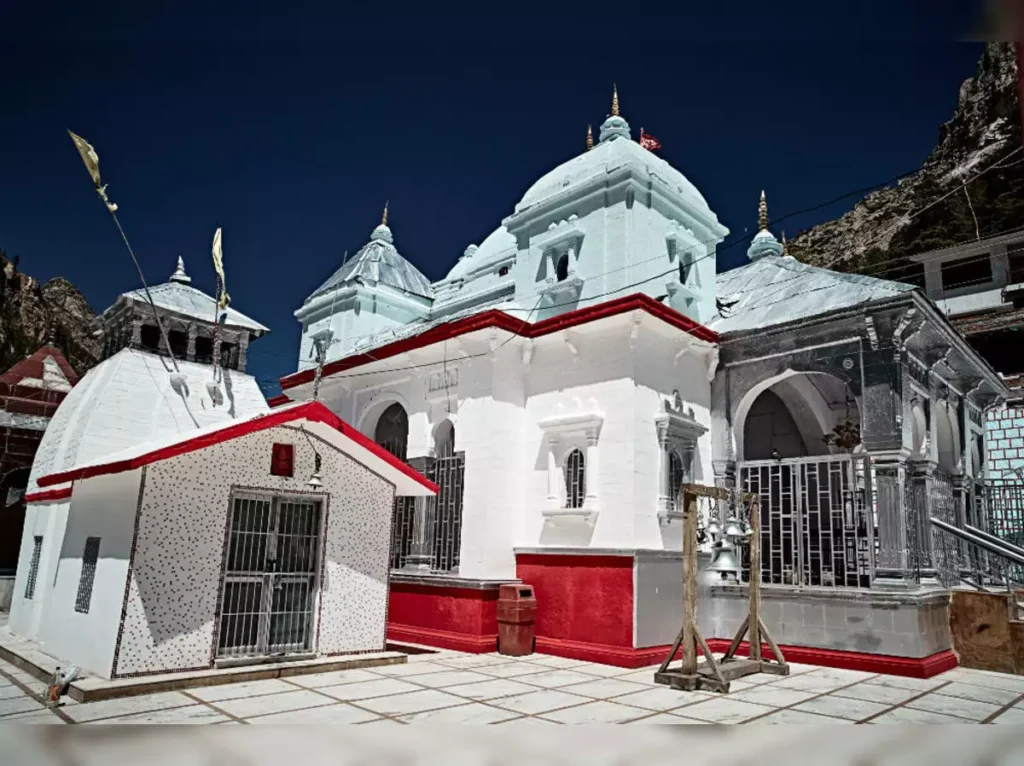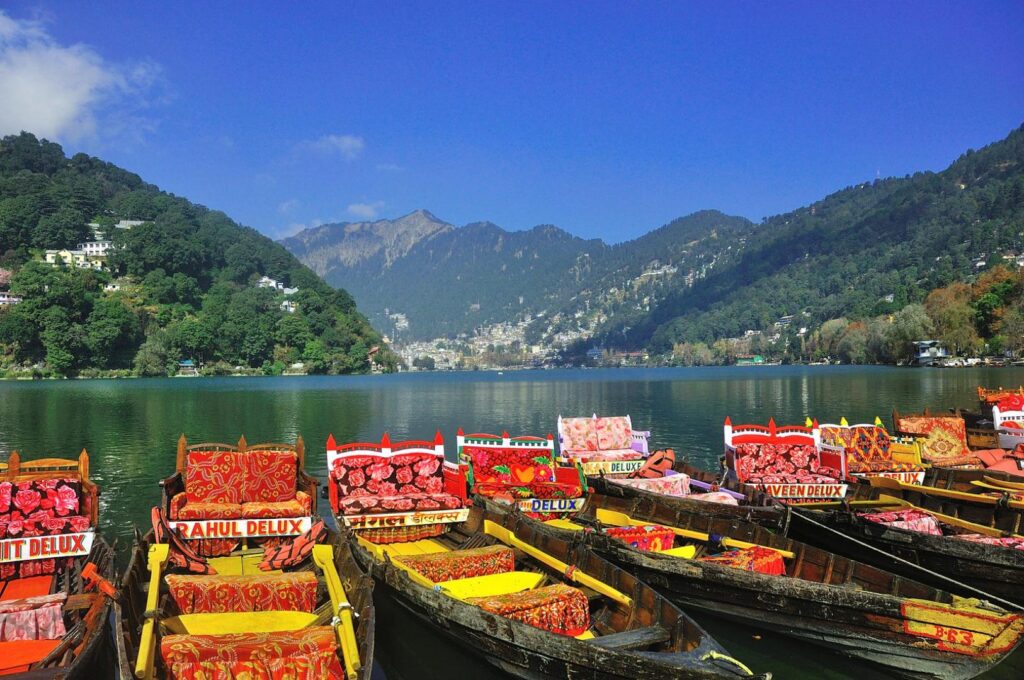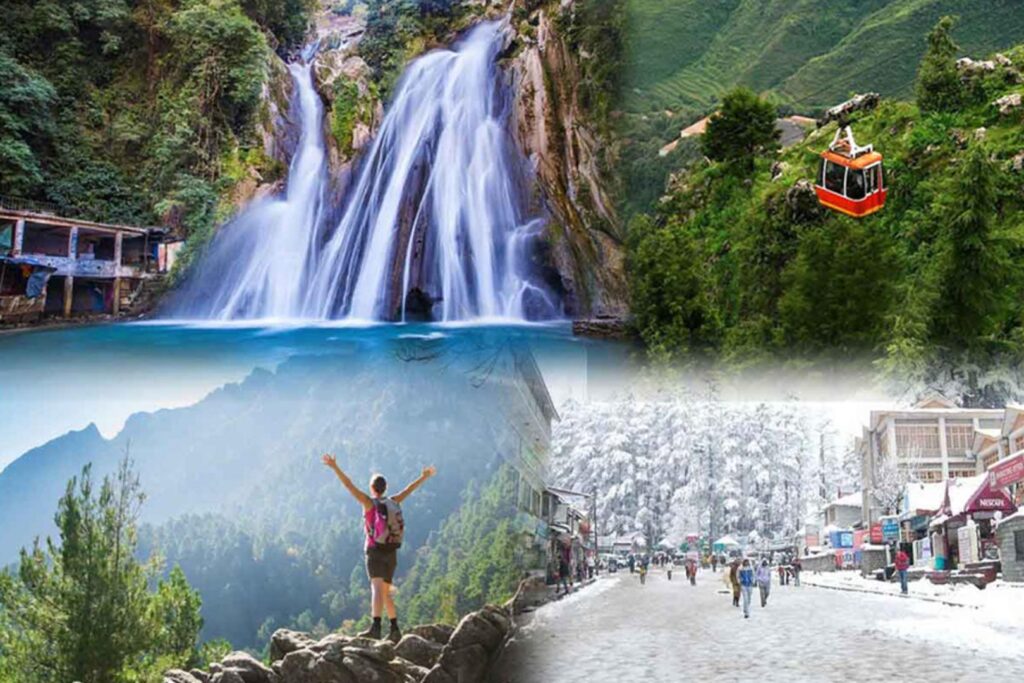Gangotri Dham

Gangotri, one of the most revered pilgrimage sites in India, is not only a religious destination but also a place of stunning natural beauty. Located in the Uttarkashi district of the northern state of Uttarakhand, it is situated at an altitude of 3,100 meters (10,200 feet) in the Garhwal Himalayas. Gangotri is part of the Chota Char Dham pilgrimage circuit, which also includes Yamunotri, Kedarnath, and Badrinath.
Mythological Significance
Gangotri holds immense significance in Hindu mythology. It is believed to be the origin of the River Ganges, which is considered the holiest river in Hinduism. According to legend, King Bhagirath meditated here to bring the Ganges down from the heavens to earth to purify the ashes of his ancestors. Impressed by his devotion, the goddess Ganga descended in the form of a river. To minimize the immense impact of her fall, Lord Shiva caught her in his matted locks, breaking her fall and releasing her in a series of streams, one of which is the Bhagirathi River, which eventually becomes the Ganges.
Historical and Cultural Importance
The Gangotri Temple, dedicated to Goddess Ganga, is the main attraction here. The temple, constructed in the early 18th century by the Gorkha commander Amar Singh Thapa, stands on the banks of the Bhagirathi River. It is a significant site for pilgrims who visit to offer prayers and perform rituals. The temple opens annually on the auspicious day of Akshaya Tritiya (April or May) and closes on Diwali (October or November), as heavy snowfall makes the region inaccessible during winter.
Gangotri is not just a religious destination but also a cultural one. The region is rich in folklore and traditions that have been passed down through generations. Festivals such as Ganga Dussehra and Diwali are celebrated with great fervor, drawing thousands of devotees.
Natural Beauty and Ecological Significance
Gangotri is nestled in the lap of the majestic Himalayas, offering breathtaking views and a serene environment. The region is characterized by dense forests, alpine meadows, and towering snow-capped peaks, including the Bhagirathi peaks and the Shivling peak, which are popular among trekkers and mountaineers.
The Gangotri Glacier, one of the largest glaciers in the Himalayas, is the source of the Bhagirathi River. It is approximately 30 kilometers long and 2 to 4 kilometers wide, making it a significant natural wonder. The glacier is retreating at an alarming rate due to climate change, raising concerns about the future water supply of the Ganges River.
The Gangotri National Park, established in 1989, is a protected area that spans over 2,390 square kilometers. It is home to a diverse range of flora and fauna, including rare species such as the snow leopard, Himalayan tahr, and blue sheep. The park also features a variety of medicinal plants and herbs, making it an ecologically important region.
Trekking and Adventure
Gangotri is a gateway to several trekking routes and adventure activities. One of the most popular treks is the Gangotri-Gaumukh trek. Gaumukh, the snout of the Gangotri Glacier, is located about 19 kilometers from Gangotri. The trek offers an opportunity to witness the stunning beauty of the glacier and the surrounding peaks. It is a moderately difficult trek, attracting adventure enthusiasts from around the world.
Another notable trek is the Gangotri-Tapovan trek, which extends beyond Gaumukh to Tapovan, a high-altitude meadow. Tapovan is renowned for its scenic beauty and panoramic views of peaks like Shivling, Meru, and Bhagirathi. The trek is challenging, requiring physical fitness and acclimatization to the high altitude.
Challenges and Conservation Efforts
Gangotri faces several challenges, primarily due to environmental degradation and the impact of climate change. The retreating Gangotri Glacier poses a significant threat to the water supply of the Ganges River, affecting millions of people who rely on it. Deforestation, pollution, and unregulated tourism also contribute to the ecological imbalance in the region.
To address these issues, various conservation efforts have been undertaken. The Indian government, along with non-governmental organizations, has initiated projects to promote sustainable tourism, reforestation, and waste management. The Gangotri National Park plays a crucial role in protecting the region’s biodiversity and promoting ecological balance.
Conclusion
Gangotri is a unique blend of spirituality, culture, and natural beauty. It offers a profound spiritual experience for pilgrims and an exhilarating adventure for nature lovers and trekkers. However, it is essential to balance religious and tourism activities with environmental conservation to preserve the pristine beauty and ecological significance of this sacred region. By promoting sustainable practices and raising awareness about the challenges facing Gangotri, we can ensure that this divine destination continues to inspire and nurture future generations.



